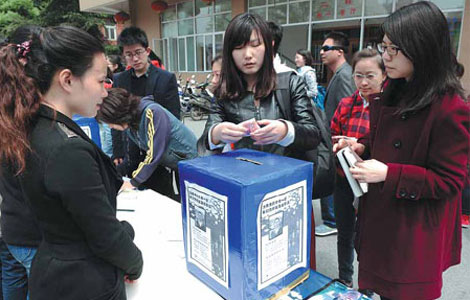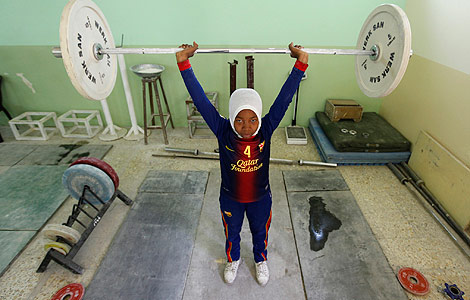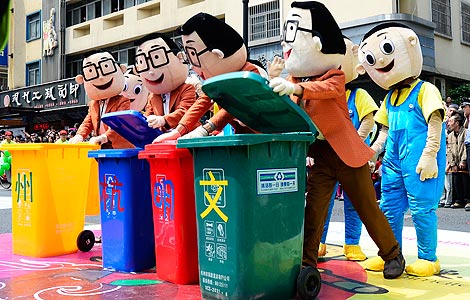The lost art of a gallery
Updated: 2013-05-06 10:18
By Sun Yuanqing (China Daily)
|
|||||||||||
 |
|
Brain Wallace, founder and director of Red Gate Gallery. Sun Yuanqing / China Daily |
"Now we are seeing new people, younger people, mainly Chinese, coming to the gallery," said Wallace. "They are also bringing their friends. There is a whole new generation of people who are young, educated, traveled, interested in art and with money. Some are in their 20s, but also a lot in their 30s and 40s."
Pace Beijing, whose portfolio includes heavyweights such as Zhang Xiaogang and Yue Minjun, traditionally focuses on more established artists, but it is now considering venturing into new territory, taking on Li Zixun, a relatively new Taiwan artist.
"This is our first attempt at diversity, and we will explore it further in the future," said Li Jia.
While the galleries keep their roots in Beijing, they are also seeking new destinations.
Pifo New Art Gallery is targeting the more mature and steady collector base in the West, taking part in major international art fairs this year in the United Kingdom, Germany, Spain and Dubai for the first time.
"The financial crisis might have affected many people, but it is much less felt among high-end art collectors, and they are still buying as long as they find the art to be interesting and affordable," said Wang Xinyou, founder and director of Pifo.
Foreign buyers now account for 30 percent of Pifo's clients, and Wang expects it to rise to 40 percent over the next two years.
With a branch in Hong Kong, Pifo is also considering a new one in neighboring Shenzhen to form a closer relationship with clients in the mainland.
As a tax-free port, Hong Kong has long been Beijing's rival as an Asian art hub. With the opening of M+, a new museum for visual arts, and Art Basel's purchase of the Hong Kong fair Art HK, the competition is becoming even more intense.
While Beijing tops Hong Kong as a source of artists, that advantage is greatly limited by the tax policies and business system operating in the capital.
However, the operating costs in Hong Kong are still much higher than in Beijing.
Pifo's 200-square-meter Hong Kong branch costs HK$300,000 ($38,600) a month while the Beijing branch costs 200,000 yuan and the space is five times as big.
Maggio from Pekin Fine Arts, who has just opened a gallery in Hong Kong "as a window into Hong Kong's growing art community", said Beijing remains its base.
"Because of the new M+ museum, the art community in Hong Kong is growing very quickly. I don't think it's Beijing or Hong Kong, I think the strategy is Beijing and Hong Kong. The platform in Beijng is not enough for Asia."
|
|
|
Related Stories
Portrait of a portraitist 2013-05-03 09:51
Venice walls inspire photographer 2013-05-02 17:45
Building while reflecting 2013-05-01 17:05
Bird-like sculpture hits Guagnzhou 2013-04-28 14:25
Curator finds new life in China's art 2013-04-28 11:32
Framed by controversy 2013-04-28 09:46
Today's Top News
Renewed interest in mission to Mars
Suspects accused of selling tainted pork
Xi pins hope on youth for innovation, advancement
China playing bigger role in Middle East
FM wraps up tour on
note of stability
Museum window vandalized
Seawater can save thirsty country
New markets buy big at trade fair
Hot Topics
Lunar probe , China growth forecasts, Emission rules get tougher, China seen through 'colored lens', International board,
Editor's Picks

|

|

|

|

|

|







